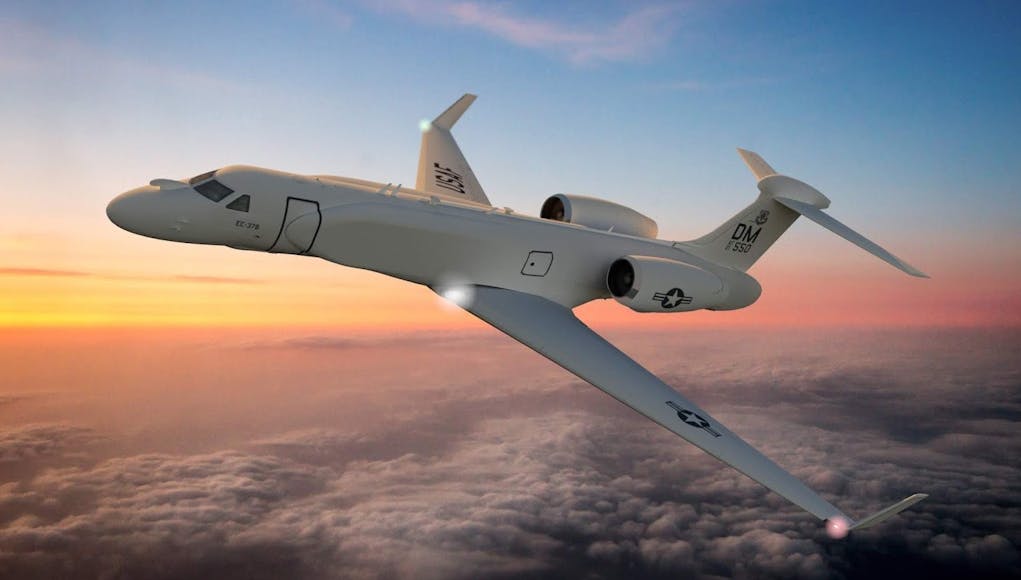Evolving threat landscape, impending modernisation of military aircraft to sustain demand for new, improved EW systems, claims Frost & Sullivan
The emergence of stealth and low observable aircraft along with Anti-Access/Area Denial (A2/AD) systems has made integrated air defense networks very complex and difficult to counter, argue Frost & Sullivan.
Additionally, the development of new missile-seeker technologies for surface-to-air missiles poses a serious threat to aircraft as they bypass existing missile-detection systems. The presence of these new threats is driving the demand for modern electronic warfare (EW) systems that are sensitive enough to detect and engage targets before they are visually seen.
A recent analysis of the global military airborne electronic warfare market forecasts the sector to rake in revenues over $30.8 billion between 2018 and 2028, with $21 billion worth of addressable opportunities arising from the planned and forecasted procurement of EW equipment.
“Many countries will be modernising their aging fleets through upgrade or replacement programs in the next 10 years,” said Ryan Pinto, Research Analyst, Aerospace and Defense at Frost & Sullivan.
“With an increased focus on EW systems, this modernisation phase will provide opportunities to replace their existing EW capabilities with modern systems that can counter new threat environments.”
Frost & Sullivan’s latest research, Global Military Airborne Electronic Warfare Market, Forecast to 2028, investigates the potential of military electronic warfare (EW) equipment in today’s volatile geopolitical climate. The report explores the trends influencing electronic warfare and the factors driving sector growth, and offers a segment-wise analysis of the global electronic warfare market. The research also provides detailed revenue forecasts and identifies promising opportunities for growth in the sector.
Global Military Airborne Electronic Warfare Market, Forecast to 2028, is a part of Frost & Sullivan’s Aerospace & Defense Growth Partnership Service program, which they say helps organisations identify a continuous flow of growth opportunities to succeed in an unpredictable future.














This is an area where we lead the rest of NATO, aside from the US obviously. We are reasonably well resourced and experienced in this, but is a part of the military which isnt glamourous and therefore less well known about by the general public.
Perhaps within NATO. Though Australia has some claims to fame in this arena.
According to the War Zone’s Tyleor Rogoway
“All these capabilities—Growlers, Next Generation Jammer, G550 EW and ELINT aircraft, E-7 upgrade—are slated to mature to an operational form around 2022.
At that time Australia will have a electronic warfare capability only second to the US.”
https://www.thedrive.com/the-war-zone/12197/australia-set-to-become-one-of-the-worlds-top-aerial-electronic-warfare-powers
Our upcoming Defence review is to remove the assumption that the US would be an ally in any conflict and therefore we would have access to their intelligence, Electronic Warfare and earth sensing assets. I can see the other European and NATO nations making the same assumption and building their indigenous Sensing and EW capabilities (like the French order this week), easier for them as they didn’t allow themselves to become as dependant in that area.
Hopefully that assumption that the US won’t always be there in conflict will also translate to increases in other areas, too.
The UK will need these aerial platforms to deal with drone swarms, we couldn’t stop one drone at Gatwick immediately.
I guess we’re lucky Boris is PM, he’s still trying to find Rhodesia on the map probably, let alone order another Falklands, while Pritti Patel is too busy listing ER as extremists and planning the extermination of hippies.
It’s all gone quiet on those two UK tankers and I wondered if you chaps were still friends with the Americans now that they go to war without telling us.
I guess you chaps feel as bad as I do, knowing that Boris fired the only serving armed forces personnel in his cabinet (Penny Mordaunt) out of spite.
I guess Ian Duncan Smith turned out not be such a great recruitment advert for the armed forces after all. The ex-soldier whose welfare policy changes killed more ex-soldiers than the enemy, policies that ended up costing taxpayers more.
I guess it wouldn’t be the first time a Tory was in charge and the Royal Navy lacked ships and especially air defence, the last time losing 17 ships in the Falkands. I mean you guys do have “shields up” ready for the drone swarms right?